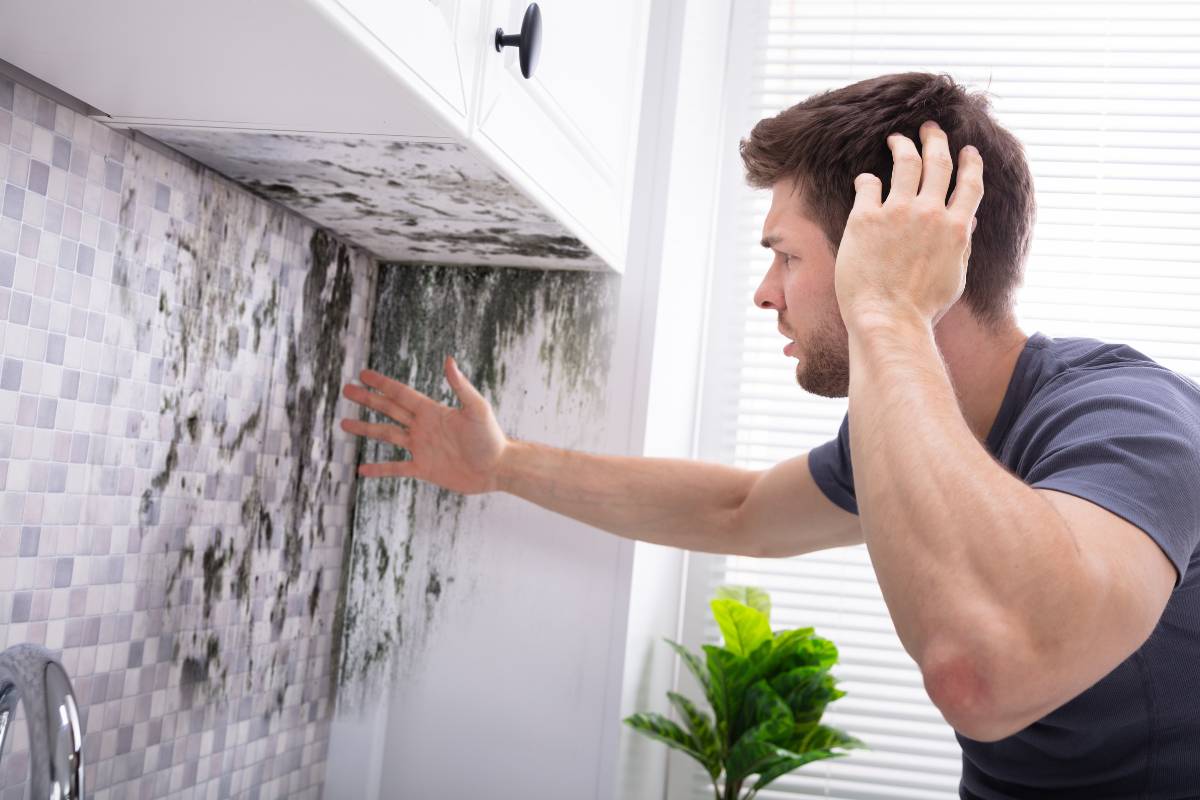Top 10 Warning Signs of Mold Toxicity You Must Not Ignore

Mold illness, which most of the time is caused by being exposed to mold spores in indoor environments for a long time, poses a great danger to health. It is important to get early 10 warning signs of mold toxicity to try and reduce the impacts on health. Here are 10 warning signs of mold toxicity:
Table of Contents
TogglePersistent Respiratory Issues
Respiratory problems are among the most prevalent symptoms of mold toxicity. These can include chronic coughing, wheezing, shortness of breath and recurrent sinusitis.The respiratory tract gets irritated when mold spores are inhaled which may bring about conditions like asthma and bronchitis.
Allergic Reactions
Mold allergy usually manifests as sneezing; itchy eyes especially in some individuals who develop skin rashes. The symptoms imitate those of hay fever and they last as long as one keeps himself or herself open to such substances.
Skin Irritations
Different skin problems can be caused due to exposure to molds such as eczema (rash) and hives (urticaria). These reactions occur following direct contact with molds or materials containing them mainly because individuals who have delicate skins suffer more when they come into contact with these things.
Cognitive and Neurological Symptoms
This is the most dangerous of the 10 warning signs of mold toxicity. Cognitive defects resulting from toxic mold consumption affects various people leading to brain fog, memory loss, complicating concentration capacities. Dizziness, migraines and headaches are other symptoms likely experienced by different persons that significantly limit their daily functioning abilities.
Fatigue and Weakness
Chronic fatigue syndrome accompanied by general body weakness is another telltale symptom for those affected by biotoxins produced by molds. The toxins constantly fighting within the organism could result in this condition’s state of perpetual exhaustion.
Gastrointestinal Issues
Digestive issues such as bloating, gas, diarrhoea and abdominal cramps can occur due to mycotoxins that disrupt the gut. These digestive problems arise from the fact that these toxins damage the balance of bacteria in the stomach and affect its ability to digest food.
Mood Swings and Mental Health Problems
Also if it comes to mental health issues, toxic mold has an effect on an individual’s mood changes among other things such as depression. This is because inflammation by mold mycotoxins can modify the brain’s performance hence emotions and moods.
Joint Pain and Muscle Aches
Individuals who are suffering from mold-infested environments often experience joint aches also called arthralgia as well as muscle pains. Generally when one encounters mold, his or her immune system can become weak resulting in inflammations that may cause pain for example arthritis affecting them through the muscles and joints.
Ear, Nose, and Throat Problems
Respiratory problems are among numerous ENT disorders which arise due to exposure to molds like ear infection; sore throat; nasal passages get congested. To individuals susceptible with allergies or already having asthma conditions these signs might be more severe.
Frequent Infections and Immune System Dysfunction
Among other health risks induced by toxic molds relates to reduced immune systems of victims rendering them more prone to infections, which can only be identified using 10 warning signs of mold toxicity. The compromised immune response leads to frequent flu-like symptoms characterised by colds apart from other diseases as a result of recurring exposures.
10 Warning Signs of Mold Toxicity in Toddlers
Persistent Coughing and Wheezing
This is the most apparent of the 10 warning signs of mold toxicity in toddlers. Toddlers exposed to molds tend to develop continuous coughs coupled with wheezes similar to colds or respiratory infections. Still, lasting long enough will warrant considering mold exposure amongst possible causes here.
Recurring Ear Infections
For young children dealing with toxic black mold is likely a common culprit whenever they have recurrent ear infections. Mold may irritate Eustachian tubes thereby causing inflammation and subsequent infections.
Skin Rashes and Irritations
The mold can cause unexplained skin rashes, hives, or eczema on toddlers. For a toddler, these skin issues are particularly distressing and may require some medical attention.
Allergic Reactions
When a person sneezes, has a runny nose or itchy eyes then he is suffering from mold allergy. Toddlers with mold allergies also have nosebleeds frequently.
Asthma-Like Symptoms
Mold exposure can even lead to asthma-like symptoms in toddlers without a previous history of asthma. Some of the symptoms include shortness of breath, chest tightness, and wheezing.
Frequent Illnesses
Mold toxicity can weaken a toddler’s immune system, making them more susceptible to infections and illnesses. Parents may notice that their child is frequently sick, with symptoms like fever, chills, and fatigue.
Digestive Issues
Toddlers exposed to mold may experience gastrointestinal symptoms such as diarrhoea, vomiting, and stomach pain. These symptoms can be particularly challenging to diagnose, as they may be attributed to other causes.
Behavioural Changes
Mold toxicity can impact a toddler’s behaviour, leading to irritability, mood swings, and changes in sleep patterns. Parents may notice that their child is more fussy or restless than usual.
Developmental Delays
Exposure to chronic molds has potential consequences over time on an infant’s development where speech motor functions cognitive milestones could be delayed according to Pediatricians.
Frequent Nosebleeds
Sometimes frequent nosebleeds can be associated with mold exposure in toddlers but that is rare. Mold spores when inhaled irritate nasal passages resulting in occasional cases of epistaxis.
Remediation and Prevention of 10 Warning Signs of Mold Toxicity
Identify and Remove Mold Sources
To prevent mold toxicity, it’s essential to identify these 10 warning signs of mold toxicity and remove the sources of mold in your home. This may involve professional mold remediation services to ensure thorough removal.
Maintain Proper Ventilation
Maintaining proper ventilation in areas prone to moisture, like bathrooms and kitchens, can help to prevent mold growth. Use of exhaust fans and dehumidifiers in such areas should be put into practice so as to reduce the humidity levels.
Fix Leaks and Water Damage
Fixing leaks and water damage as soon as possible is a crucial step in preventing molds from growing. For example regular inspection of houses would reveal any 10 warning signs of mold toxicity due to water damage such as discoloration or odours.
Clean and Dry Damp Areas
Regular cleaning and drying of damp areas can prevent mold growth. Pay attention to areas like basements, attics, and crawl spaces, which are often prone to moisture.
Use Mold-Resistant Products
You can also use drywall and paints that resist molds when doing repairs or constructing your house.
By being vigilant and taking preventive measures, you can protect your home and health from the 10 warning signs of mold toxicity.
Conclusion
Understanding the 10 warning signs of mold toxicity is crucial for protecting your health and the health of your family. In case you suspect exposure to molds, it is important to deal with this problem immediately by seeking professional assistance for mold remediation while also contacting a healthcare provider for appropriate diagnosis and treatment, whenever you see 10 warning signs of mold toxicity.
Published by Amanda Mills
Amanda Mills is a seasoned digital marketer and accomplished content writer, known for her dynamic approach to creating engaging and impactful digital content. With over a decade of experience in the industry. View more posts
Recent Post
Nude Nails: Elegant and Timeless Nail Trends







